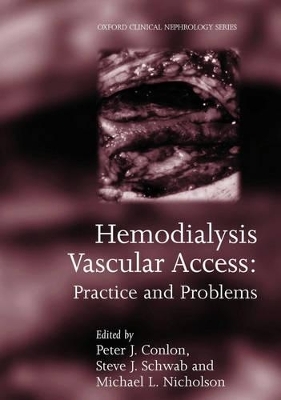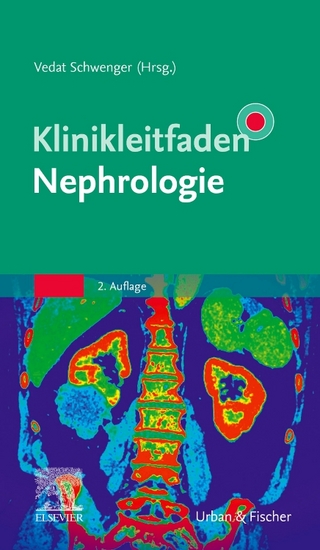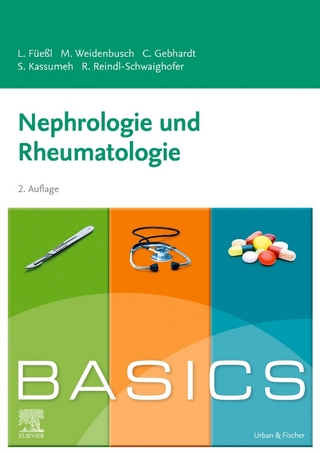
Hemodialysis Vascular Access
Practice and problems
Seiten
2000
Oxford University Press (Verlag)
978-0-19-262942-5 (ISBN)
Oxford University Press (Verlag)
978-0-19-262942-5 (ISBN)
This book describes the current status of vascular access for patients with end-stage renal failure who require dialysis. It highlights controversial areas and problems and describes differences in practice between the USA and Europe.
This book describes the current status of vascular access for patients with end-stage renal failure who require dialysis. The book highlights controversial areas and problems and describes differences in practice in USA and Europe. Vascular Access is the Achilles heel of dialysis. In the United States and Europe in 1999 there were in access of 400,000 patients maintained on dialysis. The success of this life sustaining procedure is dependant on being able to successfully access the circulation and obtain blood flows of between two and five hundred mls per minute three times a week. In 1964 Cimino and Brescia described what remains today the premier form of vascular access. Not long after the development of the Cimino Brescia fistula it became apparent that there were patients in whom it was either impossible or extremely difficult to create an adequate fistula for dialysis. As dialysis technology has been applied to older and sicker patients this trend has continued, such that in the United States the majority of patients starting dialysis do not have a primary fistula. The maintenance of long-term vascular access in patients who do not have a primary fistula requires considerably increased effort. In recent years a number of innovations have considerably increased the success of long- term vascular access in these patients. This book brings together these developments, including strategies to prospectively detect impending vascular access failure, and strategies to pre-emptively prevent graft failure. Simultaneously with these developments there have been dramatic improvements in our understanding of the pathophysiology of graft failure, this improved understanding of the biology of access failure are beginning to bring to the clinical arena newer strategies to delay graft failure.
This book describes the current status of vascular access for patients with end-stage renal failure who require dialysis. The book highlights controversial areas and problems and describes differences in practice in USA and Europe. Vascular Access is the Achilles heel of dialysis. In the United States and Europe in 1999 there were in access of 400,000 patients maintained on dialysis. The success of this life sustaining procedure is dependant on being able to successfully access the circulation and obtain blood flows of between two and five hundred mls per minute three times a week. In 1964 Cimino and Brescia described what remains today the premier form of vascular access. Not long after the development of the Cimino Brescia fistula it became apparent that there were patients in whom it was either impossible or extremely difficult to create an adequate fistula for dialysis. As dialysis technology has been applied to older and sicker patients this trend has continued, such that in the United States the majority of patients starting dialysis do not have a primary fistula. The maintenance of long-term vascular access in patients who do not have a primary fistula requires considerably increased effort. In recent years a number of innovations have considerably increased the success of long- term vascular access in these patients. This book brings together these developments, including strategies to prospectively detect impending vascular access failure, and strategies to pre-emptively prevent graft failure. Simultaneously with these developments there have been dramatic improvements in our understanding of the pathophysiology of graft failure, this improved understanding of the biology of access failure are beginning to bring to the clinical arena newer strategies to delay graft failure.
Preface ; Introduction ; Acute Vascular Access ; Pathophysiology of Vascular Access Failure ; Long-term outcome of different forms of vascular access ; Cuffed catheter access ; Dialysis access infection ; Surgical considerations in vascular access ; Upper arm AV fistula ; Vascular Access for the 'difficult' patient ; Strategies for prospective detection of graft dysfuction ; Percutaneous treatment of access dysfunction ; Options for restoration of thrombosed vascular access:Thrombolysis ; Options for restoration of thrombosed vascular access: Surgery ; Dialysis outcomes quality initiative (DOQI) ; Vascular Access in children ; Novel therapies to prevent graft dysfunction
| Erscheint lt. Verlag | 24.2.2000 |
|---|---|
| Reihe/Serie | Oxford Clinical Nephrology Series |
| Zusatzinfo | numerous black and white photographs and line figures |
| Verlagsort | Oxford |
| Sprache | englisch |
| Maße | 172 x 247 mm |
| Gewicht | 638 g |
| Themenwelt | Medizinische Fachgebiete ► Innere Medizin ► Nephrologie |
| Medizin / Pharmazie ► Medizinische Fachgebiete ► Urologie | |
| ISBN-10 | 0-19-262942-5 / 0192629425 |
| ISBN-13 | 978-0-19-262942-5 / 9780192629425 |
| Zustand | Neuware |
| Haben Sie eine Frage zum Produkt? |
Mehr entdecken
aus dem Bereich
aus dem Bereich


